A question I seem to frequently be called to answer is “where do I find drawings?” On the one hand this is good to hear as original drawings underpin great models, but the answer is not so straightforward. In this post I’ll explore some of my sources. I’d certainly appreciate hearing about any sources I may not have covered or contact details I may have missed.
Firstly, a few words about my general process for researching models. It starts with thinking about my general specification for the thing. Generally I’m striving to be as accurate as I can be about an object at a particular point in time. But not always. There are certainly times where the impression of something is the key and thus the research needs are quite different. For the purposes of this blog though, let us assume the project is something like an NZR locomotive (These notes apply equally to more modern prototypes, but the sources will be contemporary rather than archival). Our locomotive will be described by 1) the original makers drawings, 2) NZR drawings describing various modifications prior to our date of interest (and/or revision notes on the GA and assembly drawings), and 3) Photographic records that show how things actually were. It is a fact that Head Office drawings were sometimes interpreted locally, plus many minor details would not be covered by drawings or our drawing search may not have uncovered all that are relevant. The photographic record is far from complete so a bit of interpolation from photos of contemporary locomotives or later/earlier periods is often needed. I try to find at least one really clear photo to serve as the basis and then fill any gaps as I must. The Cedric Green series of drawings is, for me, an absolutely last resort. These are far from sufficient to build a decent model.
As a general comment I have found that everything that was ever drawn is still available. Obviously this is not literally true, but over time I have found few totally blank gaps in my searches. Finding information takes time, patience and sometimes money. Drawings are not that expensive, but the numbers can mount up. The digital age has improved matters considerably as the cost to copy, store, search and transport drawings has gone down a lot.
There are two key documents that define a railway vehicle. These are:
- The General Arrangement drawing (GA). This will typically show the vehicle in plan, elevations and section. Often it will have sufficient detail to build a scale model (or largely so) and thus be all that you need. The GA will generally have been kept up to date and a list of the revisions made to it will be tabulated in the margin somewhere. Obviously these will only be current at the date the drawing copy was made.
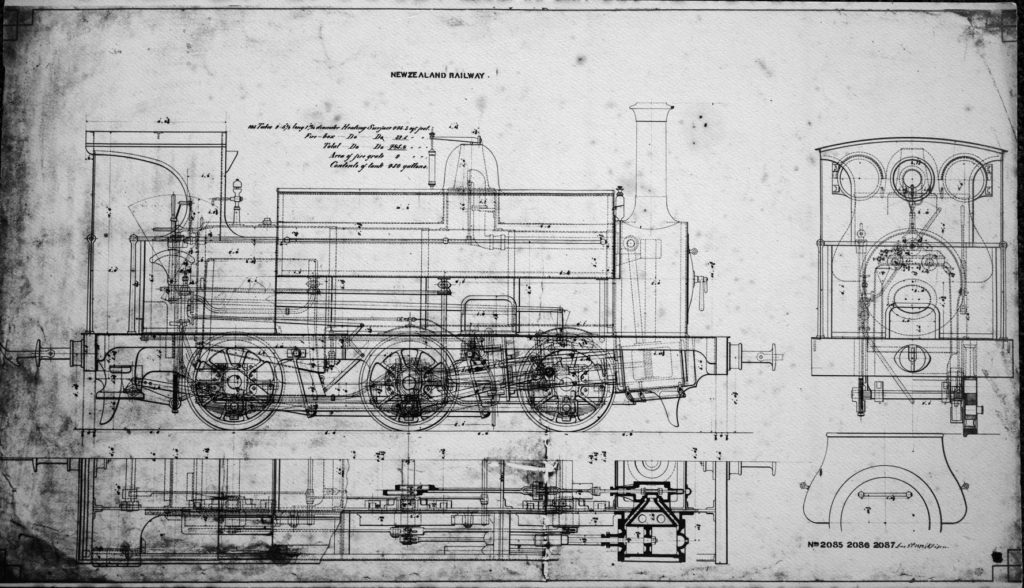
GA for the original batch of F class locos by Robert Stephenson

List of revisions extracted from the KB firebox fitting drawing.
The dates of revisions enable the model builder to include the correct details for a chosen period. Remember though that revison dates apply to the drawing, not necessarily when they were applied in practice.
- The List of Prints (LoP). The list of prints is simply a list of drawings used to make the various parts and assemblies. For locomotives it is a separate document, for less complicated construction it is often tabulated on the GA, or other assembly drawing.
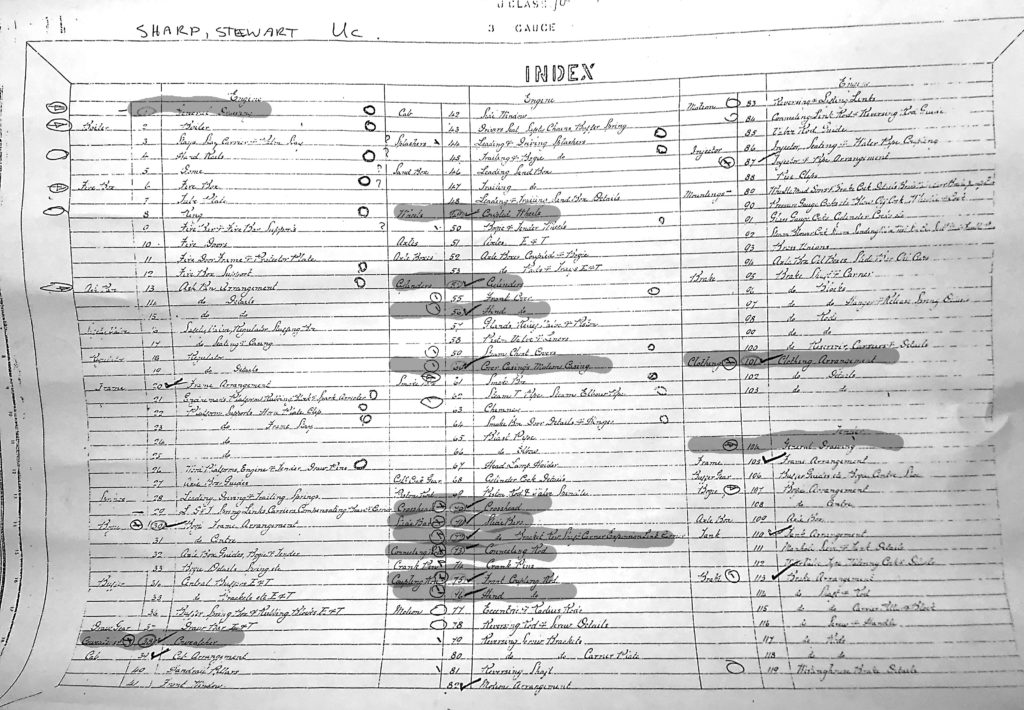
A list of Prints for the Uc (with various scribbles)
As a general rule I try to get hold of these two documents early on as they will guide what else I may need. I can assess the GA and identify what it is, and is not, useful for. The LoP will give me the drawing numbers for any parts that I need to investigate further.
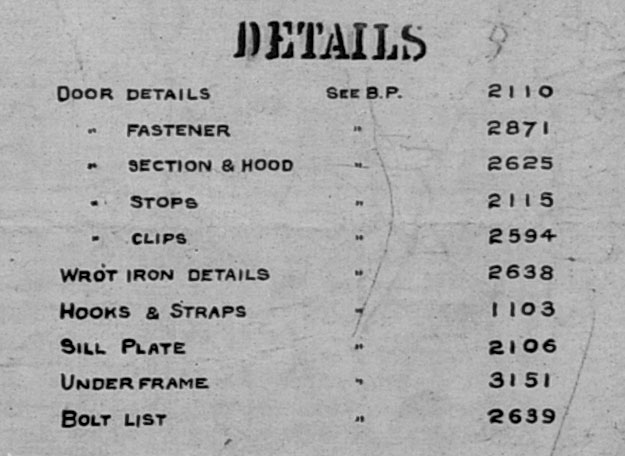
List of additional detail drawings from the X wagon General Arrangement. Most of these would not be particularly useful for modelling, but the underframe certainly might be.
Where to get drawings? Drawings and related information can be had from:
- Private collections. Very handy, but it depends on who you know and your relationship with them. Initially you may have no access to others, but over time it becomes increasingly relevant. Bear in mind that obtaining drawings from others involves a trade of some sort. If you have something to exchange, you are more likely to get something back. In my experience people are far more likely to share their knowledge and resources if you are seen to be doing something productive with them.
- KiwiRail – In principle, KiwiRail has all the drawings ever done by NZR on microfilm. For various reasons there may be some gaps in coverage, but it is pretty complete. However you generally a) need a drawing number and b) it’s $10/drawing ($20 for the first one). You can ask for a list of prints without a number, but will still be $20. Contact: Michelle.andrews@kiwirail.co.nz.
- NZRLS archives at Ava. The NZRLS is very organised and has large holdings of drawings and other information. They charge for services but are helpful (I have not really used them, so I’m not familiar with the process – I would if I were in Wellington).
- Other societies. I use Ferrymead a lot and I’m a member of CRS. They have a huge amount of stuff, but not that organised for supplying drawings. They are helpful to me, but again they know I do something productive with the info. The societies are volunteer run, so do not expect them to do things on demand.
- Mags and books. NZMRJ, Observer and Railfan have published useful info over the years. The Guild have various plan books too. For the most part I find the most useful thing has been the prototype articles in the Journal backed up with well reproduced NZR drawings – most notably those authored by Kevin Crosado.
- Facebook – surprising what lurks in file areas or can be asked for – but just showing up and asking for drawings isn’t likely to get you very far. There are prototype NZR groups, and like any other forum you need to form relationships and establish bona fides before getting much help.
- Overseas repositories – Overseas Locomotive builder’s records are now frequently held by museums. Not a route I’ve had to take, but potentially useful.
- National Archives. Good for PWD drawings. Can be hard to navigate as records can predate NZR naming (ie vehicle class or station), and terminology has subtly changed over time which makes online searching interesting. Generally not NZR because KiwiRail still hold those records (although the PWD obtained much early railway equipment and undertook construction). A lot of drawings are online for free download at good resolution. Excellent for accessing the original station build contract drawings. Archives are digitising their records so the readily available stuff is ever increasing. You can, of course, still do things the old way and visit their reading rooms to view documents.
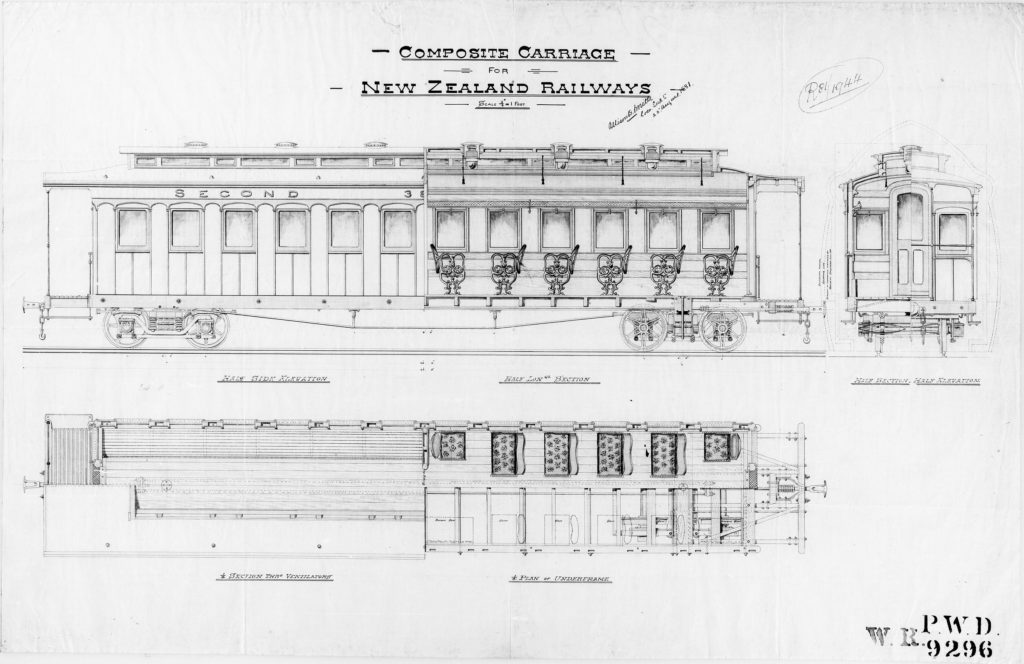
Drawing downloaded from the National Archives site ‘Archway’.
- Museums. Mainly photos (on line). Te Papa and Alexander Turnbull are worth looking at – as are other regional museums. You can download Te Papa photos at superb resolution. ATL downloads are average, but you can zoom in on them at high res online which is very useful. You can purchase photos too of course.
- Websites. It is surprising what individuals and interest groups make available – but very hit and miss in coverage and often poor in resolution.
- After my original blog was posted, it was pointed out to me that there are online repositories coming online (see for example http://www.railplanz.org.nz/). At the time of writing this is exciting only if your interest is the 70′ turntable, but if such repositories become comprehensive, are accessible and inexpensive they will rapidly become the go to source.
The drawings we might be interested in have been produced over a span of around 150 years. During that time technology, standards and drawing style have changed a lot. What you’ll see in a drawing such as a locomotive GA has varied considerably over that period. Early drawings were often beautiful, but not particularly well dimensioned. Late steam period drawings were packed with information. Drawings from CAD sources are often relatively scant with data as this is available as part of a virtual package and not printed on something like the GA which is kept quite clean.
We are blessed to have superb information available to model the NZR scene, even if sometimes it can be a bit of work to get it.
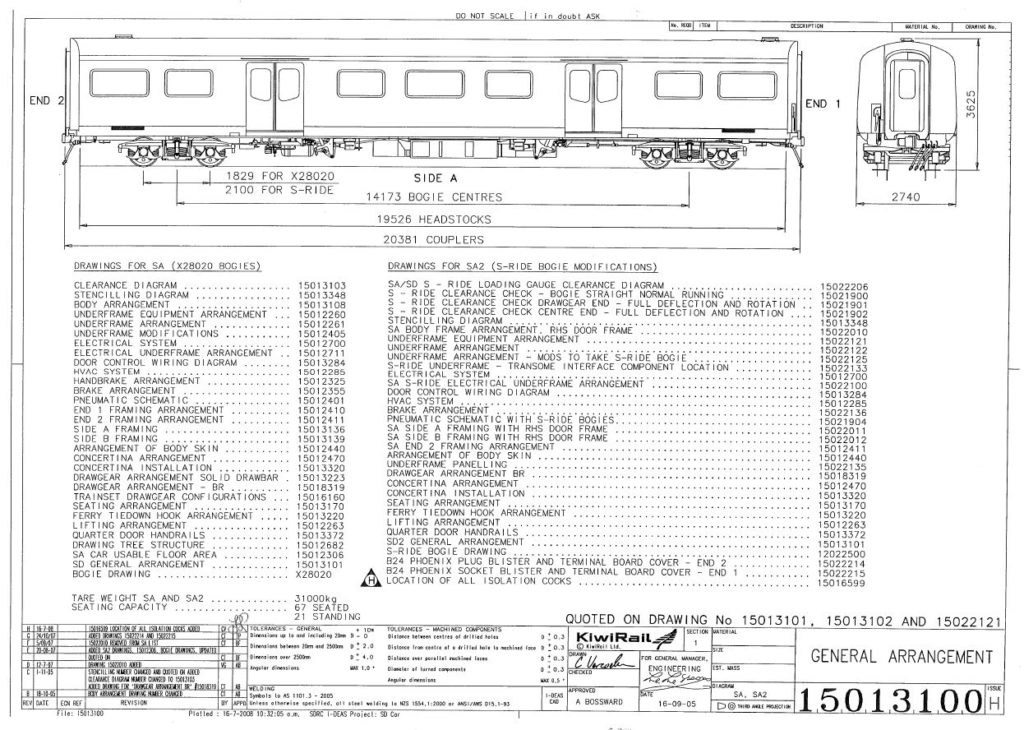
A modern general arrangement – SA car. Note that the modelling detail is not very useful, but the list of prints is included.
It pays to put about what you are doing and be patient. I generally collect info when the opportunity presents – typically years before the project happens. As a build or kit progresses people get to know about it and gaps get filled through their interest and generosity. This is rather important. If you beaver away and produce the finished model in a splash, someone will come up with the prototype information you missed.
